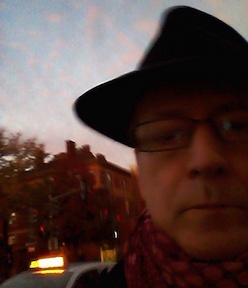
Peter Temple has a distinct style, a kind of in-medias-res effect that extends from the plot to the sentence structure. The Broken Shore reads as if it were the third or fourth novel in a crime series, when in fact it's a stand along novel. Details from the past of Senior Detective Sergeant Joe Cashin, who is at the center of the story and at the focus of the novel's third-person point of view. At first, I thought I had missed some earlier episodes in Cashin's career, but when I realized what was going on, the splintered quality of the story and its style became clear. Indirect dialogue, leaving much as simply understood, forces the reader to interpret and to make suppositions--or simply to go with the flow. It's as if at all points, the reader is overhearing a conversation in progress, and people and incidents referred to in passing without explanation will only be clarified at some other time. Singo, for instance, is referred to several times in the first half of the novel, but who that is is not clarified until the second half, and then only slowly. The story is also told indirectly, as Cashin discovers the people and events connected to the beating of a wealthy man in his own home. Cashin is himself "damaged goods," on a sort of leave from his Homicide job, assigned to a small station in Port Monro. In spite of having roots in the community (the old ruin he lives in belonged to an ancestor who died while trying to dynamite the place), he remains an outsider: able to be an observer to the racist attitudes of the white community to the Aboriginal community living in a nearby settlement. Cashin in fact has Aboriginal cousins, though he lacks any personal or social sense of solidarity with those other outsiders. There is powerful but understated imagery in the book, regarding the "broken shore" of the title, but the novel is primarily "dramatic," rather than poetic--the emphasis is on dialogue as well as some indirect internal monologue on Cashin's part. The conversations that move the story forward are ironic and oblique, especially in in the sometimes joking, sometimes aggressive talk among the cops. Once in the flow of the book, the reader is tied into the narrative (interpolated into the story) through the necessary effort of keeping up with the pace of the dialogue and with the gradual unfolding of the truth. The resolution of the story is a bit conventional, given the indirect route getting there. Again, there is some suggestion of a novel in a series in the way things are resolved, but not quite--as if leaving something for the next book. But the buzz around the book is deserved, regardless of any conventional elements, because of the quality of the writing and the clear portrait of racism in its most casual an its most destructive manifestations. Does anyone have any recommendations about which of Temple's stand-alone or series novels to seek as a follow-up?




